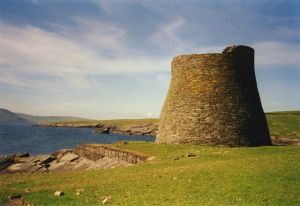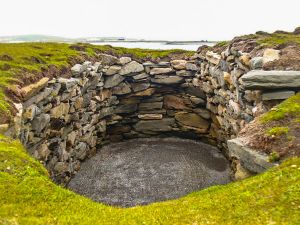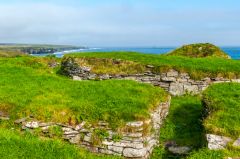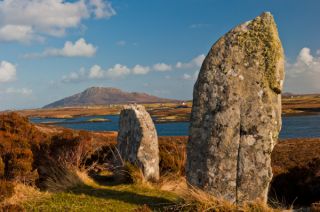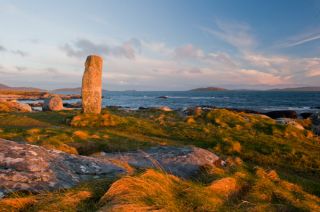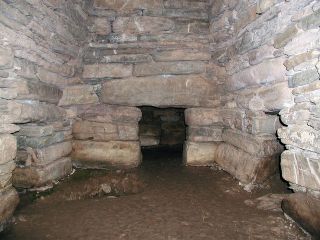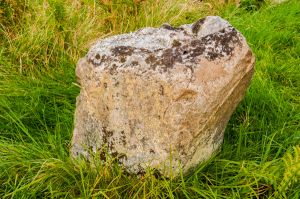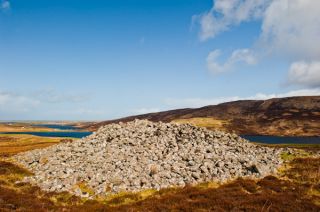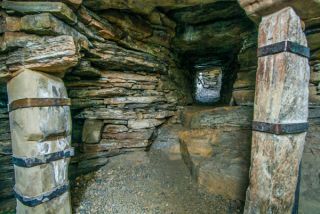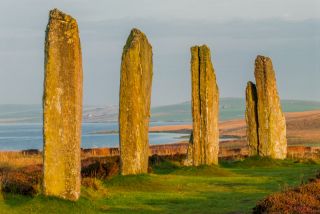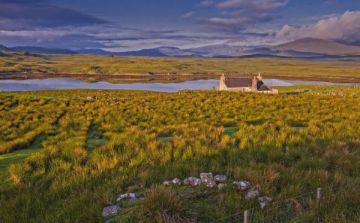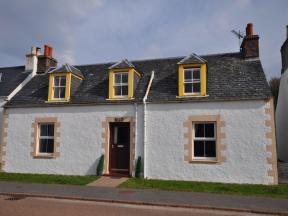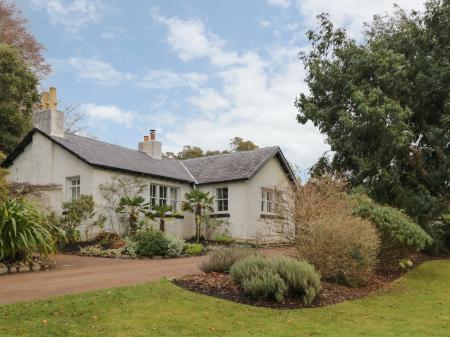Scottish Highlands - Prehistoric Sites
- Map of Prehistoric Sites in Highlands and Islands
- Map of ALL Prehistoric Sites in Scotland
- Map of all attractions in Highlands and Islands
Taking in the Highlands, and Scottish islands including Orkney, Shetland, Skye, and the Western Isles (Harris, Lewis, North Uist, South Uist, Benbecula, Berneray, Barra, and Eriskay).
Mousa Broch is considered to be the finest surviving Iron Age broch in the world. Standing 40 feet high and 50 feet in diameter at the base, with a long entrance passage and a stair leading inside the wall to a series of galleries and a walkway atop the building.
Mousa, Shetland, Highlands and Islands, Scotland
Heritage Rating: ![]() ?
?
Heritage Highlight: The most complete and tallest broch in the world
Nearest Self Catering Cottages
In a stunning location on the edge of the sea, this stone blockhouse is probably of Iron Age date, though there similarities to the construction techniques used in later broch building. It was likely built for defensive purposes, though it would have taken a determined invader to attack the location! There are three cells surviving, and the site gives views across to the lighthouse on Sumburgh Head.
Scatness, Shetland, Highlands and Islands, Scotland
Heritage Rating: ![]() ?
?
Heritage Highlight: A well-preserved Iron Age fort in a stunning location
Nearest Self Catering Cottages
In a striking clifftop location stand the well-preserved remains of an Iron Age broch. The broch was built between 100 BC and 100 AD, but Nybster may have been occupied as early as 700 BC. Finds from the excavated site can be seen in the nearby Caithness Broch Centre.
A99, Nybster, Highlands and Islands, Scotland, KW1 4XR
Heritage Rating: ![]() ?
?
Heritage Highlight: One of the best preserved brochs in Caithness
Nearest Self Catering Cottages
The best-preserved stone circle in the southern isles, Pobull Fhinn stands on the slope of a hill looking east over Loch Langass, with the mass of Ben Langass in the distance. The name loosely translates as 'Finn's People', a reference to the mythical Gaelic hero Fionn mac Cumhaill (Finn MacCool).
Langais, Clachan, North Uist, Highlands and Islands, Scotland
Heritage Rating: ![]() ?
?
Nearest Self Catering Cottages
There can surely be no ancient standing stone in Britain with easier access than this! The solitary stone at Pollachar is on the very southern tip of South Uist, looking out to sea, immediately beside the road.
B888, Pollachar, South Uist, Highlands and Islands, Scotland
Heritage Rating: ![]() ?
?
Nearest Self Catering Cottages
Quoyness is a good example of a Neolithic chambered tomb, built around 3000 BC. The tomb stands in a ritual landscape, near another chambered tomb and several smaller Bronze Age burial cairns.
Sanday, Orkney, Highlands and Islands, Scotland
Heritage Rating: ![]() ?
?
Nearest Self Catering Cottages
A small stone beside the River Naver is carved with the sign of a cross. The stone is said to mark the grave of 'The Red Priest', possibly St Maelrubha, who was killed by Vikings in AD 722.
B871, Skail, Strathnaver, Highlands and Islands, Scotland, KW11 6UA
Heritage Rating: ![]() ?
?
Nearest Self Catering Cottages
One of the best-preserved Neolithic chambered cairns in the Uists, and also one of the easiest to access. Reineval sits in an exposed position on the northern slope of Beinn Reinebhal. The cairn is about 75 feet wide at the base, which is set with upright kerb stones, of which about 12 are still standing. The mound is about 12 feet high, with a 3-foot-wide entrance to the main chamber.
Mingarry, South Uist, Highlands and Islands, Scotland
Heritage Rating: ![]() ?
?
Nearest Self Catering Cottages
Rennibister Earth-House is a curious Iron Age underground passage and chamber standing in a farmyard near Finstown. Though probably not intended as a burial chamber, the remains of 18 human skeletons were discovered in the chamber when excavated.
Finstown, Mainland, Orkney, Highlands and Islands, Scotland
Heritage Rating: ![]() ?
?
Nearest Self Catering Cottages
The Ring of Brodgar is one of the most beautifully situated prehistoric monuments in Britain. The stone circle stands on a low rise beside Loch Harray on Orkney Mainland. The Ring dates to about 2500 BC. There are 27 stones still standing, though it is estimated that there were originally up to 60 stones. The circle is set within a high earthen bank which gives across the loch to the circular burial mound of Maes Howe. A short distance away are the Stones of Stenness, and recent excavations have revealed a huge ceremonial complex of buildings near the circle.
Stenness, Mainland, Orkney, Highlands and Islands, Scotland
Heritage Rating: ![]() ?
?
Nearest Self Catering Cottages
